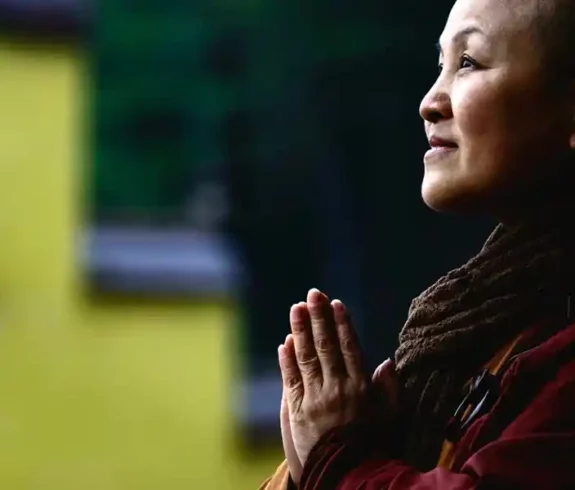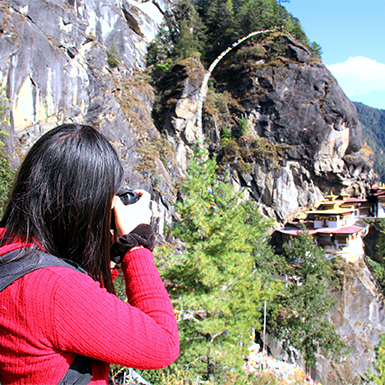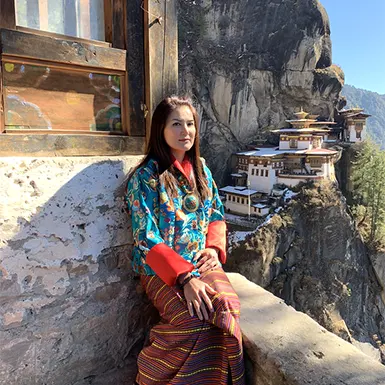In the vast landscape of Tibetan Buddhism, Pema Chödrön stands out as a beacon of clarity and compassion. Chödrön’s original aptitude in connecting ancient wisdom and contemporary problems has influenced millions across the globe, owing to her qualities as a leading Western nun and accomplished instructor.
Chödrön’s path to Buddhism was not conventional because she was born Deirdre Blomfield-Brown in New York City. After a challenging divorce, she sought solace in Meditation, eventually finding herself drawn to the teachings of Chögyam Trungpa Rinpoche, a revered Tibetan master. Ordained as a nun in 1972, Chödrön dedicated her life to sharing the profound insights of Tibetan Buddhism with Western audiences.
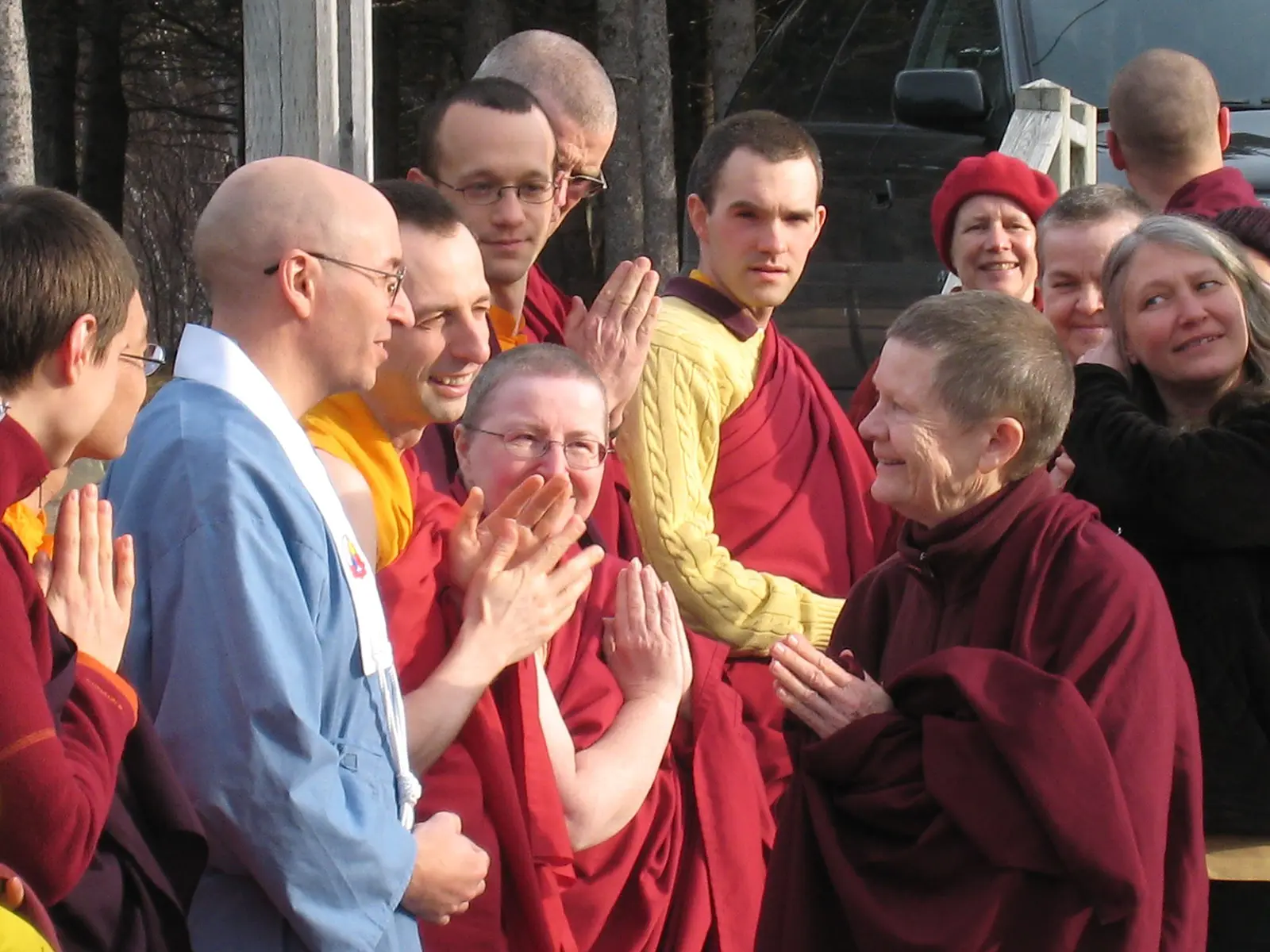
Why Pema Chödrön Matters: A Guide for Modern Life
Chödrön’s teachings are particularly relevant in today’s fast-paced, often overwhelming world. Her emphasis on working with our difficulties, rather than trying to escape them, resonates deeply with those facing challenges like anxiety, relationship issues, or career struggles. Here are some fundamental aspects of Chödrön’s teachings that we can easily apply to our daily lives:
- Working with Difficulty: Chödrön, famously known for her book “When Things Fall Apart,” encourages us to view challenges as opportunities for growth. Books like “Chodron When Things Fall Apart” provide practical advice on employing Meditation and mindfulness to manage difficult emotions and situations effectively.
- The Power of Presence: Chodron emphasizes the importance of being present. By centering ourselves in the here and now, we can free ourselves from worrying about the future or regretting the past.
- Kindness and Compassion: Compassion is a core tenet of Buddhism and is central to Chödrön’s teachings. She encourages us to cultivate kindness towards others and ourselves, especially during times of hardship.
From New York City to the Dharma: Pema Chödrön’s Early Life and Spiritual Awakening
Pema Chödrön, a name synonymous with Tibetan Buddhist wisdom in the West, wasn’t always known by this moniker. Born Deirdre Blomfield-Brown in 1936, her early life unfolded in the bustling metropolis of New York City. Little did anyone know then that this young woman would one day become a leading voice in Buddhist thought.
Education and Early Effects
Deirdre attended Miss Porter School in Connecticut, followed by the University of California at Berkeley. While details about her studies are limited, her education exposed her to diverse ideas and perspectives. This intellectual foundation likely influenced her openness to exploring spiritual paths later in life.
The Seeds of Transformation
Deirdre’s life took an unexpected turn after two marriages ended in divorce. Facing emotional challenges, she began searching for meaning and solace. This quest led her to Meditation, a practice that offered a sense of calm amidst the storm. Eventually, he came across the teachings of Chogyam Trungpa Rinpoche, a famous Tibetan Buddhist teacher.
The Path to Buddhism
It resonated deeply with Deirdre when she listened to Rinpoche’s teachings. The result was that he could span the chasm that separated the antiquity of Buddhist knowledge from the present-day West, causing a significant change in her life. In 1972, she formally converted to Buddhism and received the name Chodron, which translates to “lotus flower dharma torch.”
A Turning Point
Chodron Pema’s decision to become a Buddhist nun in 1974 marked a significant turning point. This commitment reflected her dedication to the dharma (teachings) and her unwavering desire to share its transformative power with others. It was the beginning of a remarkable trip to see her become a beacon of hope and guidance for countless individuals seeking peace and understanding in a complex world.
A Life Dedicated to Dharma: Pema Chödrön’s Monastic Journey
Pema Chödrön’s path to becoming a revered spiritual teacher began with a deep commitment to monastic life. Her dedication to Buddhist practice and insightful teachings have made her a leading figure in Tibetan Buddhism, particularly in the West.
Chödrön’s monastic trip started with studies under renowned Tibetan teachers like Lama Chime Rinpoche and Chögyam Trungpa Rinpoche. In 1974, she took novice ordination as a Buddhist nun under Rangjung Rigpe Dorje, the sixteenth Karmapa. It marked a significant step in her spiritual development. Following her Rinpoche’s request, Chödrön received full monastic ordination in Hong Kong in 1981, becoming the first American woman to achieve this honor within the Vajrayana tradition.
Gampo Monastery in Nova Scotia, Canada, is important in Chodron monastic life. Chögyam Trungpa Rinpoche founded Gampo Abbey, a Tibetan Buddhist monastery established explicitly for Western students. Chödrön has been the principal teacher at Gampo Abbey for many years, sharing her profound wisdom and guidance with students worldwide.
Life Within the Monastery
While details of Chödrön’s daily monastic routine are not widely available, it’s safe to assume her life reflects the core principles of Tibetan Buddhist monasticism. These principles typically involve:
- Strict adherence to monastic vows involves celibacy, living a simple life with minimal possessions, and committing to ethical conduct.
- Regular meditation practice: Meditation is the cornerstone of Buddhist practice, and monasteries provide a structured environment for cultivating mindfulness and inner peace.
- Engaging in Buddhist studies: Monastics dedicate significant time to studying Buddhist philosophy, scriptures, and practices.
- Participating in community rituals and ceremonies: Monasteries offer a strong sense of community, with shared rituals and ceremonies forming an essential part of daily life.
The Impact of Monastic Training
Pema Chödrön’s monastic training undoubtedly shaped her approach to teaching. Here’s how her monastic life likely influenced her work:
- Deep understanding of Buddhist principles: Years of dedicated study within a monastic setting provided Chödrön with a profound knowledge of Buddhist philosophy and practices.
- Experience with monastic discipline: Monastic life instills discipline and a commitment to self-reflection. These qualities are evident in Chödrön’s teachings, which emphasize personal responsibility and working with challenging emotions.
- Compassion for others: Living in a monastery fosters compassion and service to others. This compassion is a cornerstone of Chödrön’s teachings, encouraging kindness and understanding towards oneself and others.
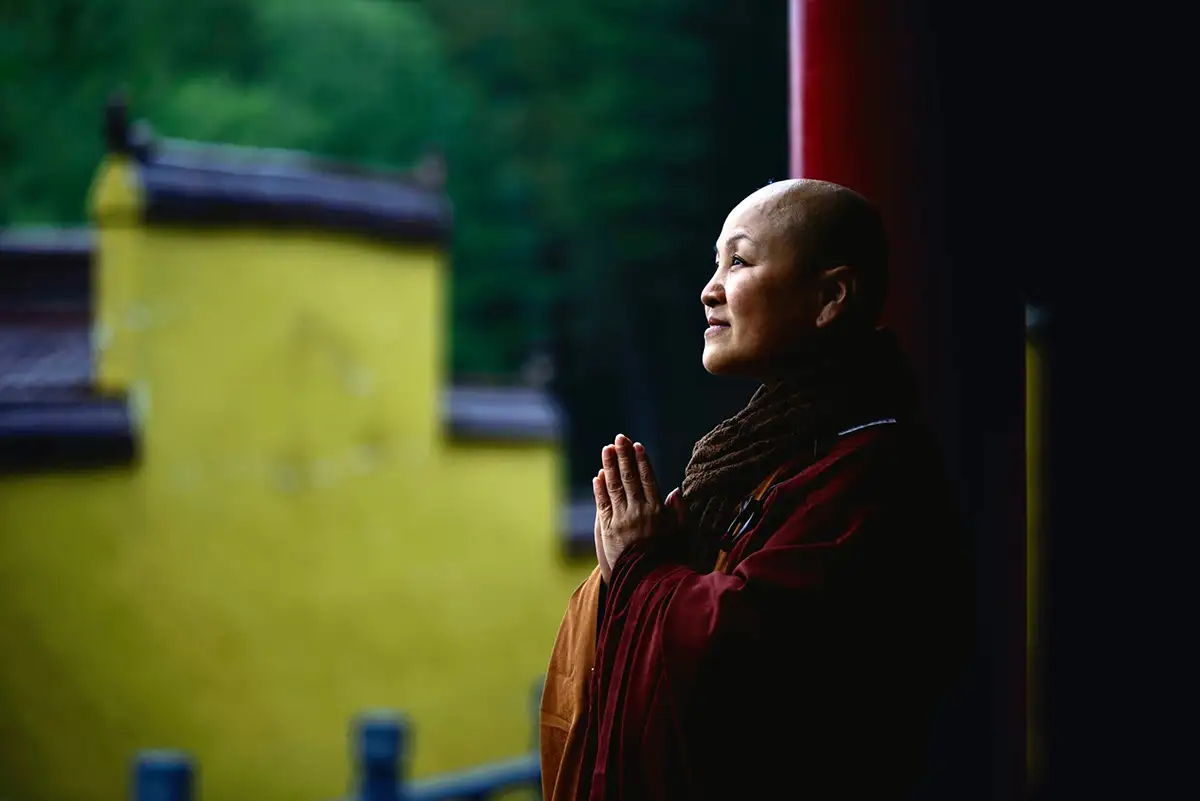
Pema Chödrön’s Major Works and Teachings
Chodron’s profound teachings have resonated with millions seeking clarity and peace in a complex world. Her books, like the bestselling “When Things Fall Apart,” have become guideposts for navigating life’s inevitable challenges. This section explores Chödrön’s significant works and delves into the core themes that define her message.
Transforming Difficulties: Pema Chödrön’s Major Books
Chödrön’s books offer practical guidance for applying Buddhist wisdom to everyday life. Here’s a glimpse into some of her most influential works:
- When Things Fall Apart: This international bestseller tackles the reality of life’s difficulties head-on. Chödrön guides readers to use difficult experiences as opportunities for growth and change.
- The Places That Scare You: This book encourages readers to confront their fears and anxieties, recognizing them as gateways to personal liberation.
- Start Where You Are: This accessible guide emphasizes the importance of mindfulness and gentle self-acceptance as a starting point for spiritual growth.
- Living Beautifully: Chödrön explores the concept of “sherpa,” or attachment, and how letting go fosters genuine happiness and inner peace.
These are just a few of Chodron’s many insightful books. Each work delves deeper into the core themes that resonate throughout her teachings.
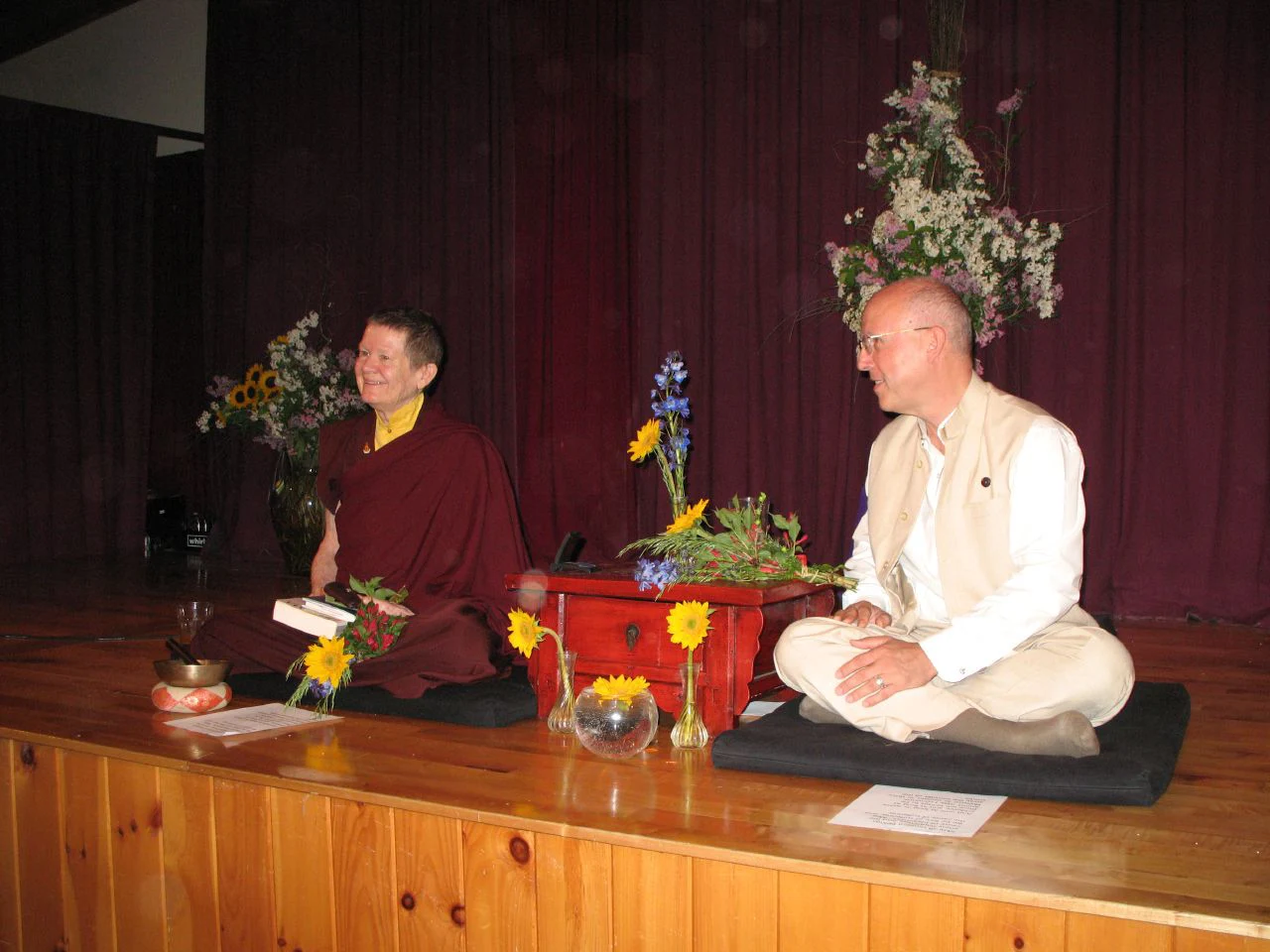
Central Themes of Pema Chödrön’s Teachings
Chödrön’s message centers around a few key themes that offer practical tools for navigating life’s complexities:
- Cultivating Compassion: Compassion for oneself and others lies at the heart of Chödrön’s teachings. She encourages readers to cultivate genuine kindness and understanding for a more peaceful world.
- The Power of Mindfulness: Mindfulness practice, the ability to focus attention on the present moment without judgment, is a cornerstone of Chödrön’s teachings. Through Meditation and mindful awareness, we can cultivate inner peace and clarity.
- Embracing Impermanence: Life is inherently impermanent – everything changes. Chödrön teaches us to accept this reality, not with resignation, but with a sense of openness and courage that allows us to easily navigate change.
Making the Teachings Practical
Chodron Pema’s teachings are more than just philosophical concepts. She offers practical tools to integrate them into daily life:
- Meditation: Chodron encourages the use of Meditation as a way to achieve inner peace and deeper self-understanding.
- Working with Emotions: Instead of suppressing difficult emotions, Chödrön teaches us to acknowledge and work with them healthily.
- Developing Patience: Life doesn’t always unfold according to our plans. Chödrön emphasizes the importance of cultivating patience to navigate challenges with grace.
Bridging East and West: Pema Chödrön’s Contributions to Western Buddhism
Pema Chödrön is leading in bringing Tibetan Buddhist wisdom to the Western world. Unlike traditional presentations that might seem esoteric, Chödrön’s teachings resonate with a modern audience due to her approachable style and emphasis on the practical application of Buddhist principles in everyday life.
Making Buddhism Accessible
The particular circumstances of Chödrön’s life are significant in enabling her to form a bridge between the secular thought traditions of the East and West. Born in New York City as Brenda Wilkinson, she experienced the joys and challenges of modern life firsthand. This experience allows her to speak directly to the concerns of Westerners, using clear and relatable language. Her teachings are free of complex jargon, making Buddhist philosophy readily understandable for a new generation of seekers. Here’s how Pema Chödrön makes Tibetan Buddhism accessible to Western audiences:
- Down-to-Earth Communication: Chödrön speaks warmly and conversationally. She avoids complex terminology, making her teachings relatable to those unfamiliar with Buddhist concepts.
- Focus on Practical Application: Unlike many other authors, Chodron does not just write about a particular literary theory. She focuses more on practicing Buddhism day by day. People who read their works will discover valuable things such as meditation or mindfulness methods, which can form part of what they usually do daily.
- Addressing Modern Challenges: Chödrön’s teachings directly address the anxieties and struggles faced by people in the modern world. We explore relationship problems, career challenges, and emotional difficulties with compassion and practical guidance.
A Beacon of Hope in Difficult Times
Pema Chödrön’s teachings are particularly relevant during challenging times. Her bestselling book, “When Things Fall Apart,” offers solace and guidance in facing life’s inevitable difficulties. Readers take comfort in Chodron’s message of using adversity as an opportunity to grow and change. Here’s what readers are saying about Chodron’s impact:
- “Pema Chödrön’s teachings helped me see my anxieties not as roadblocks, but as opportunities to develop compassion and understanding.” – Lisa W.
- “When Things Fall Apart became a lifeline during a personal crisis. Chödrön’s words helped me navigate my challenges with courage and acceptance.” – David M.

A Legacy of Peace and Transformation: Pema Chödrön’s Enduring Impact
Pema Chödrön’s influence transcends the boundaries of religion and culture. Her teachings, emphasizing practical application and a down-to-earth approach, have resonated deeply with millions seeking peace and clarity in a complex world. This section explores Chödrön’s lasting impact on her followers and contemporary spiritual seekers.
A Beacon of Hope for Modern Seekers
Chödrön’s teachings offer a unique blend of ancient wisdom and contemporary relevance. She doesn’t shy away from the challenges of modern life, addressing issues like anxiety, relationship difficulties, and career struggles with compassion and practical guidance. This focus on real-world application makes her message particularly appealing to contemporary seekers. Here’s how Chodron’s teachings have impacted her followers:
- Cultivating Inner Peace: Chödrön’s emphasis on mindfulness and Meditation empowers individuals to cultivate inner peace and navigate life’s difficulties more easily.
- Developing Compassion: Her teachings on compassion encourage kindness and understanding towards oneself and others, fostering a more peaceful and harmonious world.
- Finding Strength in Difficulty: Chodron opposes the idea of escaping suffering. He suggests that dealing with challenges would be a better choice, thus allowing us to improve. This message is for those facing difficult times, giving them hope and power.
Popularizing Meditation and Mindfulness
Pema Chödrön has played a significant role in popularizing Western meditation and mindfulness practices. Her books, such as “When Things Fall Apart” (a perennial favorite), introduce these practices to a broad audience in a clear and accessible way. Here’s how Chödrön has contributed to the popularity of Meditation and mindfulness:
- Making Meditation Approachable: Chödrön presents Meditation not as a mystical practice but as a simple yet powerful tool for cultivating inner peace and clarity.
- Focus on Everyday Applications: She emphasizes integrating Meditation and mindfulness into daily life, even for those with busy schedules. Simple techniques like mindful breathing or focusing on the present moment become accessible tools for managing stress and anxiety.
- Personal Experiences: Chödrön speaks openly about her struggles and how Meditation has benefitted her. This personal touch makes the practice seem more relatable and encouraging for beginners.
Facing Challenges and Cultivating Compassion
Pema Chödrön’s influence hasn’t been without its share of scrutiny. She has faced occasional criticism as a prominent figure in a complex tradition like Tibetan Buddhism. Let’s explore some of these challenges and how she has addressed them:
Cultural Appropriation
Some critics argue that Chödrön’s adaptation of Tibetan Buddhist teachings for a Western audience amounts to cultural appropriation. They are concerned that translating the tradition might cause its essence to be lost.
Chödrön’s Response
Chödrön acknowledges the importance of respecting the origins of her teachings. She emphasizes that her role is not to copy Tibetan traditions but to transmit their core principles in a way that resonates with Westerners. He tries to bridge the cultural gap while maintaining religious integrity.
Accessibility vs. Depth
Another criticism centers on Chödrön’s teachings’ accessibility. Some argue that her focus on practical applications may come at the expense of deeper philosophical exploration.
Chödrön’s Response
Chödrön believes that making Buddhist teachings relevant and relatable is crucial for their initial appeal. She views her work as a gateway, encouraging students to delve deeper into the vast philosophical underpinnings of Tibetan Buddhism if they choose.
Balancing Criticism with Openness
Chödrön approaches criticism with openness and discernment. She acknowledges the validity of some concerns and uses them to refine her approach. However, she remains grounded in her core message of compassion and working with difficulties, which resonates with millions worldwide.
Moving Forward
Pema Chödrön’s willingness to engage with criticism reflects her commitment to ongoing learning and growth. This openness allows her teachings to remain relevant and adaptable in a constantly evolving world.
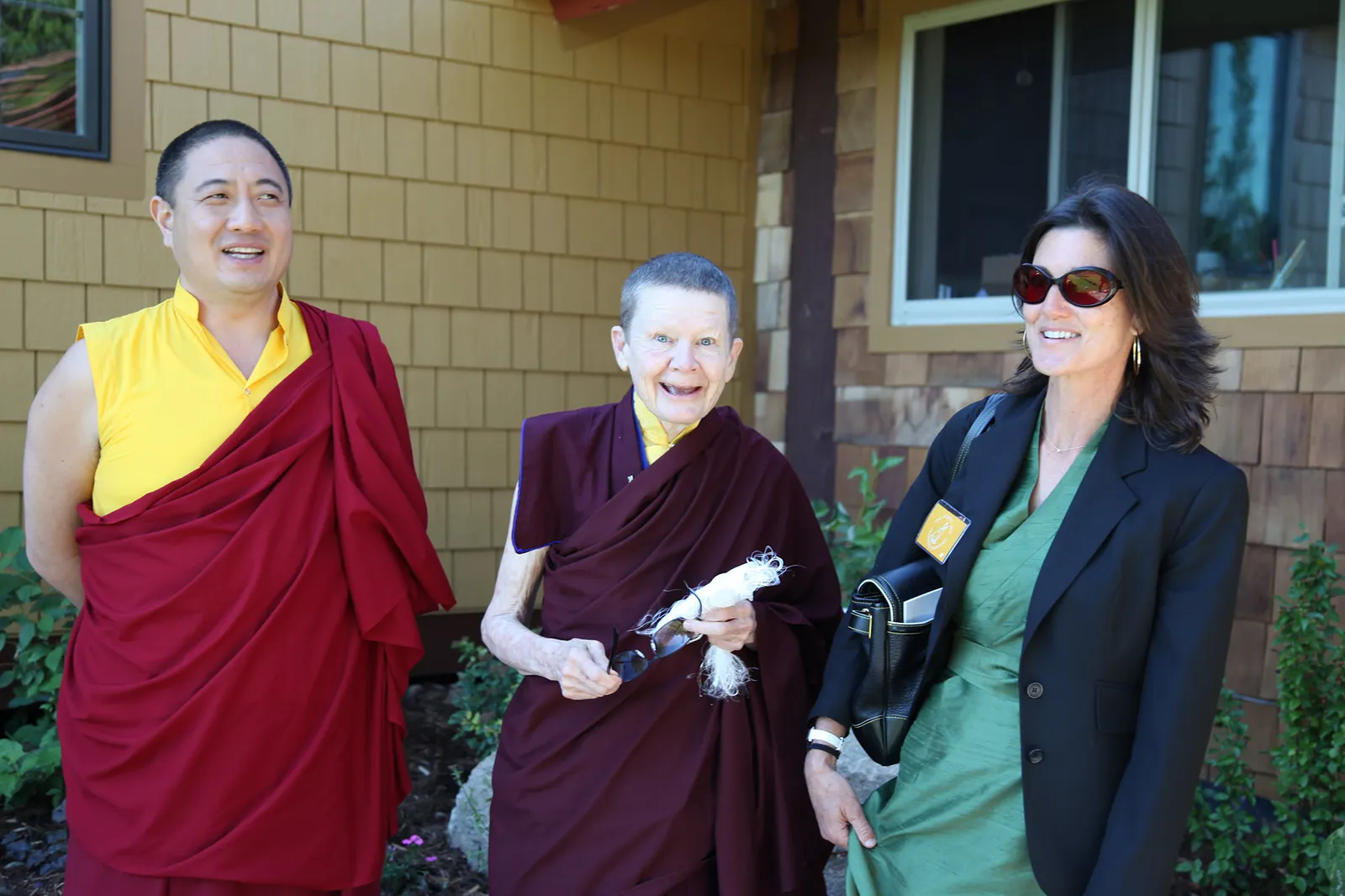
A Life Devoted to Dharma: Pema Chödrön’s Private World
While Pema Chödrön’s teachings reach millions, details about her daily life at Gampo Abbey in Nova Scotia remain relatively private. Monastic life fosters a sense of community and shared purpose but also emphasizes personal reflection and dedicated practice. Here’s what we can glean about Chödrön’s life beyond her public role as a teacher:
Monastic Routines and Practices
The specific details of Chödrön’s daily monastic routine are not widely available. However, based on the general structure of Tibetan Buddhist monastic life, we can make some educated guesses:
- Strict adherence to monastic vows typically involves celibacy, living a simple life with minimal possessions, and committing to ethical conduct.
- Regular meditation practice: Meditation is the cornerstone of Buddhist practice, and monasteries provide a structured environment for cultivating mindfulness and inner peace. Chödrön likely dedicates significant time to formal meditation practice each day.
- Engaging in Buddhist studies: Monastics study Buddhist philosophy, scriptures, and practices. This approach allows Chodron to deepen her understanding and continue learning throughout her life.
- Participation in community rituals and ceremonies: Monasteries offer a strong sense of community, with shared rituals and ceremonies forming an essential part of daily life. Chödrön likely participates in these activities, fostering a connection with her fellow monastics.
Balancing Public Teaching with Private Practice
Pema Chödrön’s role as a prominent teacher requires travel and public engagement. However, it’s safe to assume she prioritizes balancing her public duties and commitment to monastic life. Here’s how Chödrön might navigate this balance:
- Structured Retreats: Chödrön leads retreats and workshops throughout the year, but these likely occur within designated periods. This schedule allows Pema Chödrön to dedicate time to personal practice and monastic life between her teaching engagements.
- Maintaining a Simple Lifestyle: Even while traveling, Chödrön likely adheres to simple life principles. This approach might involve staying in basic accommodations and avoiding unnecessary distractions.
- Prioritizing Personal Practice: While Pema Chödrön’s teachings reach a vast audience, her core commitment undoubtedly lies with her monastic practice. This dedication to personal development fuels the depth and authenticity of her teachings.
Conclusion: Finding Peace in a Chaotic World
Pema Chödrön’s life and work offer a beacon of hope and guidance in a world that often feels overwhelming. Here’s a final reflection on her remarkable contributions:
A Bridge Between East and West
Chödrön’s unique ability to translate ancient Tibetan Buddhist wisdom into accessible and relatable teachings has made her a pivotal figure in the West. Her Pema Chodron books, like the acclaimed “When Things Fall Apart,” have resonated with millions seeking peace and understanding daily.
Practical Tools for Everyday Challenges
Chödrön doesn’t shy away from the realities of life. She acknowledges our difficulties and offers practical tools for navigating them with greater awareness, compassion, and mindfulness.
The Power of Presence and Kindness
Her teachings emphasize the importance of being present at the moment and cultivating kindness, not just toward others but also toward ourselves. This message of self-compassion resonates deeply in a world obsessed with achievement and perfectionism.
A Legacy of Empowerment
Ultimately, Pema Chodron’s legacy is empowering individuals to control their happiness. She provides a framework for working with life’s inevitable challenges and cultivating inner peace, even amidst external chaos.
Finding Your Path
Whether you’re a seasoned meditator or simply curious about Buddhist principles, Chödrön’s teachings offer a valuable starting point. Her books, talks, and retreats provide a wealth of resources to explore further and integrate her wisdom into your trip.
